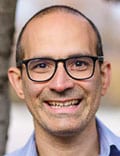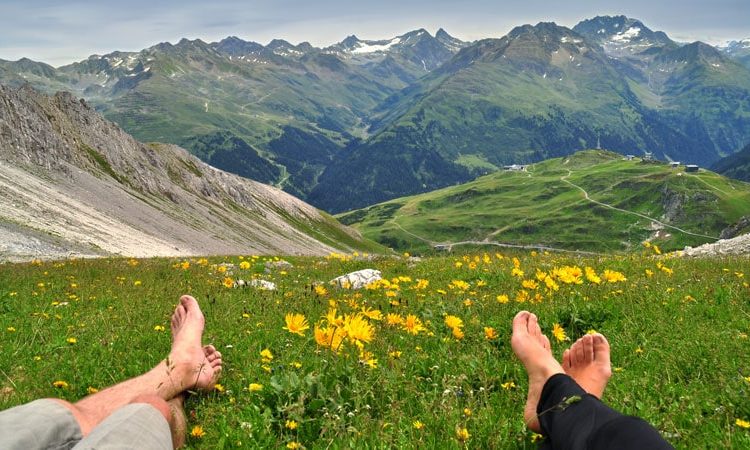Central Park was created largely as a solution to a health problem. In the mid-1800s, New York City saw a rapid rise in population that created “crowded, unhealthy conditions,” and the park was devised as a way for city dwellers to experience a more rural environment without leaving town. In 1858, workers began constructing the park, planting half a million trees, shrubs, and vines. The end result cemented the city’s status as a “world-class destination.”
Today, the link between nature and human health is as clear and as urgent as ever. There is a growing body of evidence to suggest that simply spending time in natural environments can have significant positive effects on a wide range of mental and physical health issues, from diabetes to anxiety. Over the last decade, a rising number of health professionals have begun to prescribe “doses” of time in nature to patients and to advocate for the rise of nature prescription programs throughout the world.
Like the construction of Central Park, the nature prescription phenomenon is, in part, a response to urbanization. Over the past few centuries, the rise of agriculture, the Industrial Revolution, and the development of increasingly complex technologies have led to westerners leading highly sedentary, screen-centric lifestyles in manmade surroundings.
According to the Environmental Protection Agency, Americans spend approximately 90 percent of their time indoors, and an additional 6% in enclosed vehicles. In 2021, the University of Michigan reported that 83% of people in the US live in urban areas. By 2050, that number is expected to rise to 89%.

Dr Gretchen Daily
“More and more people are being packed into cities,” Gretchen Daily, PhD, director of Stanford University’s Center for Conservation Biology, faculty director of the Nature Conservancy Project, and professor of environmental science, told Medscape Medical News. “It’s an unprecedented shift in human history. We really are becoming an urban species, and in many places, a mega-city species. And the impacts of that on our well-being are being felt in really profound ways.”
According to Stanford University, individuals who live in urban areas have a 20% greater risk of developing an anxiety disorder and a 40% higher risk of developing a mood disorder than those who live in rural areas. Individuals who are born and raised in cities are also twice as likely to develop schizophrenia. It is not clear why these heightened mental health risks exist in urbanites, but a lack of exposure to nature is a possible explanation.
Incorporating Nature Into Healthcare
Jocelyn, a 17-year-old from Washington, DC, found herself in the emergency room on multiple occasions with dizzying headaches and chest pains. After running several tests that indicated nothing was physiologically wrong, her physicians concluded that her symptoms must be stress-related.

Dr Robert Zarr
Robert Zarr, MD, a pediatrician, physician-researcher, and founder of Park Rx America, asked Jocelyn about her access to nature. She mentioned her father had a hammock in his backyard. Zarr prescribed her a 1-hour weekly “dose” of time in the hammock, without electronics or other distractions. “I did take it more seriously because it was a prescription,” Jocelyn recalls in the short film Nature: No App Required.
“[A] prescription…really is a contract of sorts between the patient and their healthcare professional,” Zarr told Medscape Medical News. “We don’t want to be in a situation where we’re just giving this broad advice to all people. We really want there to be a conversation…so there’s an opportunity to maximize the therapeutic benefit of that prescription.”
The clinical context of a nature prescription, combined with evidence of the associated health benefits, adds structure and clarity to the nebulous advice to “go outside.” Like any other prescription, nature prescriptions are intentional and specific about the form, quantity, and frequency of the recommended “dosage.”
Nature prescription initiatives such as Park Rx partner with community organizations, healthcare providers, and parks and public land agencies to incorporate nature into healthcare delivery. In 2020, the Institute at the Golden Gate reported that there were more than 100 park prescription programs across the United States.
The current wave of interest in the nature–health connection may be traced back to the publication of Richard Louv’s 2005 book Last Child in the Woods: Saving Our Children from Nature-Deficit Disorder. In the book, Louv links a modern lack of exposure to nature, or “nature deficit,” to “some of the most disturbing childhood trends, such as the rises in obesity, attention disorders, and depression.”
Today, 1 in 5 children and adolescents in the United States is obese, according to the Centers for Disease Control and Prevention. The Thomson Reuters Foundation reports that childhood anxiety and pediatric obesity rates have spiked since the onset of the COVID-19 pandemic.
“From a public health perspective, we think of children as a vulnerable population, so that’s probably first and foremost,” Zarr, who was influenced by Louv’s work, says. “[But my work] is born out of my concern for not just kids, not just adults, not just vulnerable populations, but also for healthcare professionals…The kind of things that ail our patients ail us as well: depression, suicide, drug addiction, chronic fatigue, chronic stress, burnout.”
Healthcare professionals often spend long hours helping others in fluorescent-lit offices decorated with photos of natural landscapes that are intended to soothe patients, but they may neglect to spend enough time in real-world natural landscapes themselves. Even those who prioritize healthy eating and exercise may overlook the importance of time in nature.
Like a single green salad or a pilates class, spending 10 minutes on a park bench will not miraculously cure an illness. But over time, like a nutritious diet and regular exercise, sufficient exposure to nature may be a powerful lifestyle measure that can alleviate and even prevent a wide variety of health issues.
“Nature should be the fourth pillar of health,” Melissa Lem, MD, a Vancouver-based family physician, founder of BC Parks Foundation, and director of the nature prescription program PaRx, told CityNews Vancouver in February. “[It’s] just as important as diet and exercise and healthy sleep for maintaining a healthy lifestyle.”
“Common Sense” Treatment
Nature has been prescribed to individuals with conditions from high blood pressure, heart disease, and diabetes to ADHD, depression, and anxiety. Various studies have found that time in nature is associated with health benefits including reduced stress and depression and reduced childhood obesity risk. A research review published in Frontiers in Psychology in 2020 found that as few as 10-20 minutes of sitting or walking in nature can have health benefits.

Dr Gen Meredith
“It may seem almost like common sense,” Gen Meredith, DrPH, OTR, a professor at Cornell University’s Department of Public & Ecosystem Health, who co-authored the review, told Medscape Medical News. “We probably know that individually [we’d] rather be sitting on a bench in a park than sitting in a traffic jam. But the really neat thing about these studies [is] that there are many different [physiologic] markers…it’s the lower heart rate, it’s the lower blood pressure, it’s the lower cortisol levels…at the same time as study participants being able to express that they feel less stressed, less anxious, more refreshed, [and] more able to engage.”
The Japanese exercise of “shinrin-yoku,” or “forest bathing,” involves individuals walking through forests and taking in their environment. A 2007 study published in the International Journal of Immunopathology and Pharmacology found that a forest bathing trip increased the number and activity levels of natural killer cells and raised levels of anti-cancer proteins in participants. Scientists attributed these results to trees releasing phytoncides, antimicrobial compounds that help plants fight disease.
Another study, conducted in 2015 by Stanford University, monitored two groups of participants, one of which walked in a grassland full of trees and shrubs, and the other in a traffic-congested roadway. Researchers conducted brain scans and measured both groups’ heart and respiration rates pre- and post-walk. They found little difference between the groups’ physiologic conditions but marked differences in brain activity. Notably, those who took the nature walk showed decreased activity in the subgenual prefrontal cortex, which is a part of the brain associated with rumination, a key risk factor for mental illness.
“We’re absolutely and utterly dependent on and interdependent with nature in ways that we just don’t tend to conceptualize,” Stanford’s Daily, who co-authored the study, says. “And, in at least western and modern conceptualizations, we’re almost always seen as rather special and separate, but in fact, we evolved deeply embedded in birdsong, and the sound of flowing water, and the sound of wind rustling through the trees, and sun on the cheek.”
Exposure to nature connects us to things larger than ourselves (a 1000-year-old redwood, an expansive meadow) and much smaller (a kaleidoscopic leaf, an earthworm). The effects of this shift in perspective extend beyond any single physician and patient.
Central Park may have begun as a public health solution, but today, it often raises questions about environmental justice. “If you want to map inequality in New York, you can just count trees,” reads the subheading of a 2021 New York Times article titled “Why an East Harlem Street is 31 Degrees Hotter Than Central Park West,” which details how the lack of tree cover in East Harlem creates an urban heat island and may exacerbate a wide variety of health risk factors for the neighborhood’s residents.
According to the Trust for Public Land, parks that are located in low-income areas tend to be four times smaller and more crowded than those in high-income areas. A 2008 study published in The Lancet suggests that a lack of exposure to nature is linked to income-related health disparities, and that increased access to nature could improve health outcomes for low-income communities.
“The healthcare industry cannot make this lift alone,” Daily says. “It’s going to need to be in concert with planning in cities and investing in more nature spaces, maybe in schools and other publicly owned lands. [That] would be one initial target with likely very high payoff.”
As more research emerges and more healthcare professionals highlight the link between nature and public health, city planners and policymakers may be more likely to prioritize the cultivation, maintenance, and accessibility of green spaces.
“If we’re looking for ways to increase resilience, decrease stress, decrease anxiety, [and show] these markers of [boosting] mental health and well-being, time in nature is a potentially very, very low cost — if not free — preventative or therapeutic measure,” Meredith says. “That seems, from a public health perspective, just a really great thing. It’s something that’s accessible to many and, with work, accessible to more.”
In prescribing nature to patients, healthcare professionals also emphasize the connection between human health and planetary health. Well-maintained green spaces can make environments healthier for all living things by recycling nutrients into the soil and filtering toxins from the air, which can improve the health of all individuals (and creatures) in the vicinity, whether or not these individuals actively use the spaces themselves.
Climate change may seem to some like a distant and even impersonal threat, but the nature–health connection links it directly to the individual.
“I think people feel this deficit, not just in their own life, but in their contribution back to the Earth,” Zarr, the founder of Park Rx America, says. “I think one of the very first things that we need to do, if our intention is to keep living on this planet, is to have that relationship with the Earth. And the best way to start that relationship is to go outdoors.”
For more news, follow Medscape on Facebook, Twitter, Instagram, YouTube, and LinkedIn
Source: Read Full Article
